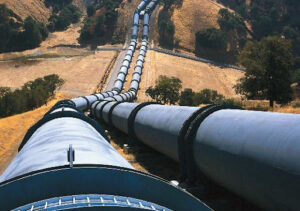
The Organization of Petroleum Exporting Countries (OPEC) has published a long-term forecast for the period until 2050, according to which oil and natural gas will remain the main sources of energy, occupying more than half of the global energy balance. This confirms the importance of hydrocarbons in the global economy and the strategic nature of energy policy.
Oil and gas demand forecast
The key drivers are:
Contradictions with other forecasts
This outlook indicates that oil and gas will retain its prominent position for at least the next 25 years. And while renewable energy is rapidly gaining momentum, the transition away from the traditional energy system must be smooth and gradual, taking into account real economic and social factors.
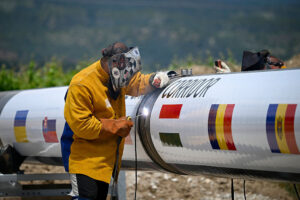
On June 23, a second auction will be held for gas supplies to Ukraine from Greece via the Trans-Balkan corridor after the first auction on May 29 failed to take place, the Ukrainian Ministry of Energy and the Ukrainian Gas Transmission System Operator said on Thursday.
As noted in particular by the Ministry of Energy, Deputy Minister Mykola Kolisnyk called on traders to actively participate in booking the product.
“At the end of 2024, the guaranteed capacity was set at 7 million cubic meters per day. The parties are now working to increase the guaranteed capacity to 11.5 million cubic meters per day by 2025,” the ministry said.
According to Kolesnik, having a joint product in the form of gas transportation from other countries, in particular from Greece, Bulgaria, and Romania to Ukraine using an economically advantageous tariff, it is possible to increase the capacity and tariff revenues of each of the participating countries, as well as ensure the supply of non-Russian resources to the EU.
“This is a way to integrate our existing infrastructure into the pan-European infrastructure on fairly competitive terms and with resources to cover the consumption of Central and Eastern Europe,” the deputy minister noted.
As emphasized by Vladislav Medvedev, acting director general of OGTSU, for Ukraine, the Trans-Balkan pipeline means access to new sources of gas: liquefied gas coming from all over the world to Greek and Turkish LNG terminals; Azerbaijani gas transported via the TAP gas pipeline; and Romanian and potentially Bulgarian offshore gas.
“Currently, together with the TSO operators of Greece, Bulgaria, Romania, and Moldova, we have introduced a joint package product for gas imports from Greece to Ukraine on competitive terms until October 2025. This product temporarily resolves the issue of high tariffs along the route,” he said.
According to Medvedev, the next step is to develop a long-term commercial solution to enable gas transportation along the entire route to Central European markets.
As reported, the first auction on May 29 for booking capacity for gas transportation from Greece to Ukraine along the Trans-Balkan route for June in the amount of 2.9 million cubic meters per day ended without any bids from participants.
Gas transmission system operators in Bulgaria, Greece, Moldova, Romania, and Ukraine have developed a scheme for supplying natural gas from Greece to Ukraine via the Trans-Balkan corridor. In particular, Bulgaria’s Bulgartransgaz EAD, Greece’s DESFA SA, Romania’s Transgaz SA, and Moldova’s VestMoldTransgaz SRL, together with Ukraine’s OGTSU, are jointly offering a route package product for natural gas supplies for the period from June to October 2025, which will facilitate gas transportation from Greece to Ukraine.
To increase the attractiveness of the route, the parties have agreed on a single gas transit tariff with a 25% discount. For the Ukrainian operator, the discount will be 46%.
The operators of the countries participating in the project will hold a single auction to allocate capacity at all points of the Trans-Balkan Corridor along the natural gas transportation route from Greece to Ukraine.
On the fourth Monday of each month, tenders will be held for the sale of capacity for the following calendar month. A single-price auction mechanism will be implemented for capacity allocation.
The proposed transport package can only be used for gas supplies to Ukraine. Previously, gas was not supplied to the country via the Trans-Balkan corridor.

Israel’s strikes on Iran’s gas infrastructure will push up gas prices in Europe, which means they may also rise in Ukraine, according to Andriy Kobolev, former head of the board of Naftogaz Ukraine.
“Israel has begun to destroy Iran’s gas infrastructure with drones… For those wondering what to do about gas purchases for this winter: this will have a significant impact on the balance (and therefore the price) of natural gas in Europe,” he wrote on Facebook on Sunday.
Kobolev explained that Iran had been supplying gas to Turkey, which resold it to the EU, but now, due to Israeli strikes, Iranian gas is at risk of being cut off, and the Turks will not be able to replace it with Russian gas because both gas pipelines are almost fully loaded.
“Therefore, Turkey will be forced to either reduce gas supplies to the EU or increase the share of more expensive LNG. In any case, this will push prices up in the EU. And if Israel continues to attack the Iranian gas sector, part of Russian gas may be redirected to Iran,” the former head of Naftogaz concluded, advising to prepare for such an impact on prices.
As reported, Ukraine was forced to return to significant gas imports from Europe due to Russian strikes on gas infrastructure.
According to the Ukrainian Gas Transmission System Operator (OGTSU), 501 million cubic meters were imported in May (54% via Hungary, 33% via Poland, and 12% via Slovakia), or 16.1 million cubic meters per day. At the same time, former OGTSU board chairman Serhiy Makogon believes that Ukraine needs to import approximately 870 million cubic meters per month, or 29 million cubic meters per day, to achieve last year’s planned gas storage targets in underground gas storage facilities (UGS).
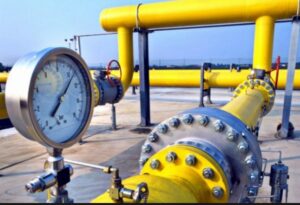
Ukraine has started importing gas via Slovakia, according to a Facebook post by Serhiy Makogon, former head of the Ukrainian Gas Transmission System Operator (OGTSU).
“Previously, imports came from Hungary and Poland, but the cheaper Hungarian route is already fully loaded, so suppliers are forced to buy more expensive capacity from Slovakia,” he wrote.
According to the former head of GTSOU, the average daily import is currently around 14.5 million cubic meters, but in order to accumulate 13.6 billion cubic meters by November 1, imports need to be increased by 2-3 times. At the same time, Slovakia has the largest import capacity – 42 million cubic meters per day.
As reported with reference to Makogon, in order to achieve last year’s planned targets for gas reserves in underground storage facilities (UGS), Ukraine needs to import at least 5 billion cubic meters by November 1, i.e., approximately 870 million cubic meters per month or 29 million cubic meters per day.
He noted that $2-2.5 billion is needed to import the minimum 5 billion cubic meters, of which $0.4 billion has already been provided by donors and may be provided further. At the same time, he believes that funds for gas purchases can also be found within the country, in particular from the budget through direct recapitalization of Naftogaz or through debt repayment schemes involving mutual settlements.
According to Gas Infrastructure Europe (GIE), Ukraine switched from gas withdrawal from underground storage facilities to gas injection on April 17. According to them, this season’s withdrawal lasted from November 1, when there were 87.037 TWh (8.315 billion cubic meters) in UGS facilities, and ended on April 16 at 7.062 TWh (0.675 billion cubic meters) – the lowest level in history.
GIE indicates that this year Ukraine ended the heating season with reserves at 2.22% of the maximum UGS capacity, while last year the withdrawal season ended on March 30 with reserves of 11.12 TWh (3.388 billion cubic meters), or 11.12% of the UGS capacity.
In turn, according to former Energy Minister Olga Buslavets, the total level of natural gas reserves in Ukrainian UGS facilities at the end of last week was 6.1 billion cubic meters (including 4.7 billion cubic meters of “buffer gas”), which is 31% lower than last year.
Over the past week, net gas imports to Ukraine (excluding short-haul) averaged 14.4 million cubic meters per day (from Hungary and Poland), while daily gas consumption in Ukraine rose to 30-33 million cubic meters per day, according to the European platform. per day (from Hungary and Poland), while daily gas consumption in Ukraine increased to 30-33 million cubic meters per day, which, according to the European platform
Agregated Gas Storage Inventory (AGSI), allows no more than 27 million cubic meters per day to be pumped into UGS facilities.
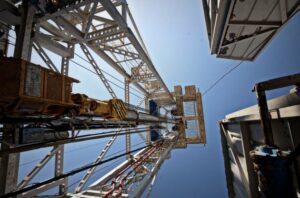
The State Oil Company of Azerbaijan (SOCAR) produced 7 million 485.59 thousand tons of oil in 2024, according to the company’s report on last year’s results.
As reported, SOCAR produced 7 million 736.202 thousand tons of oil in 2023. Thus, last year, the figure decreased by 3.2%.
According to the data, gas production in 2024 amounted to 7 billion 718.053 million cubic meters, compared to 8 billion 390.738 million cubic meters a year earlier. Thus, DNAOC reduced gas production by 8% last year.
The company also notes that last year, gas consumption in Azerbaijan amounted to 13 billion 666.353 million cubic meters, which is 1.7% more than in 2023.
Earlier, the republic’s Ministry of Energy, citing operational data, reported that in 2024, the State Oil Company of Azerbaijan produced 7.5 million tons of oil with condensate at its own fields, which is 3.8% less than in 2023, as well as 7.7 billion cubic meters of gas, which is 8.3% lower than the previous year.
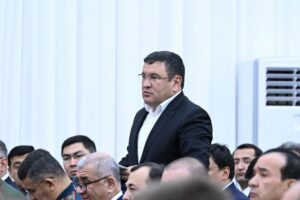
Large-scale investment projects in the chemical industry are planned in the Khorezm region of Uzbekistan, which are expected to transform this industry into one of the key drivers of economic growth in the region. This was announced by the press secretary of the President of Uzbekistan during a meeting in the Urgench district.
This year, the first phase of the construction of a $10 billion gas chemical complex will begin in the Tuprakkalinsky district, which will use MTO (methanol-olefin) technology. Upon completion of the project, the complex will annually produce 14 types of basic polymer products with high added value and a total capacity of up to 2 million tons.
The project was first announced in March last year during the Head of State’s visit to the region. At that time, Shavkat Mirziyoyev held a working meeting with the leadership of the Ministry of Energy, Uzkimyosanoat, and a large foreign investment company, whose name was not disclosed.
It was expected that the future production facilities would be able to produce up to 2.5 million tons of products per year and create about 3,000 jobs. The project is scheduled for implementation in 2024–2028.
In addition, a 10-hectare chemical technology park will be created in the Khazarasp district, where projects worth $100 million will be implemented for the production of polymer products.
Special attention was paid to the region’s construction industry. Last year, 663 enterprises in Khorezm produced building materials worth about $86.6 million. To further develop this segment, 40 new projects with a total value of $100 million are planned for implementation in 2025, which will increase production to about $118.1 million.